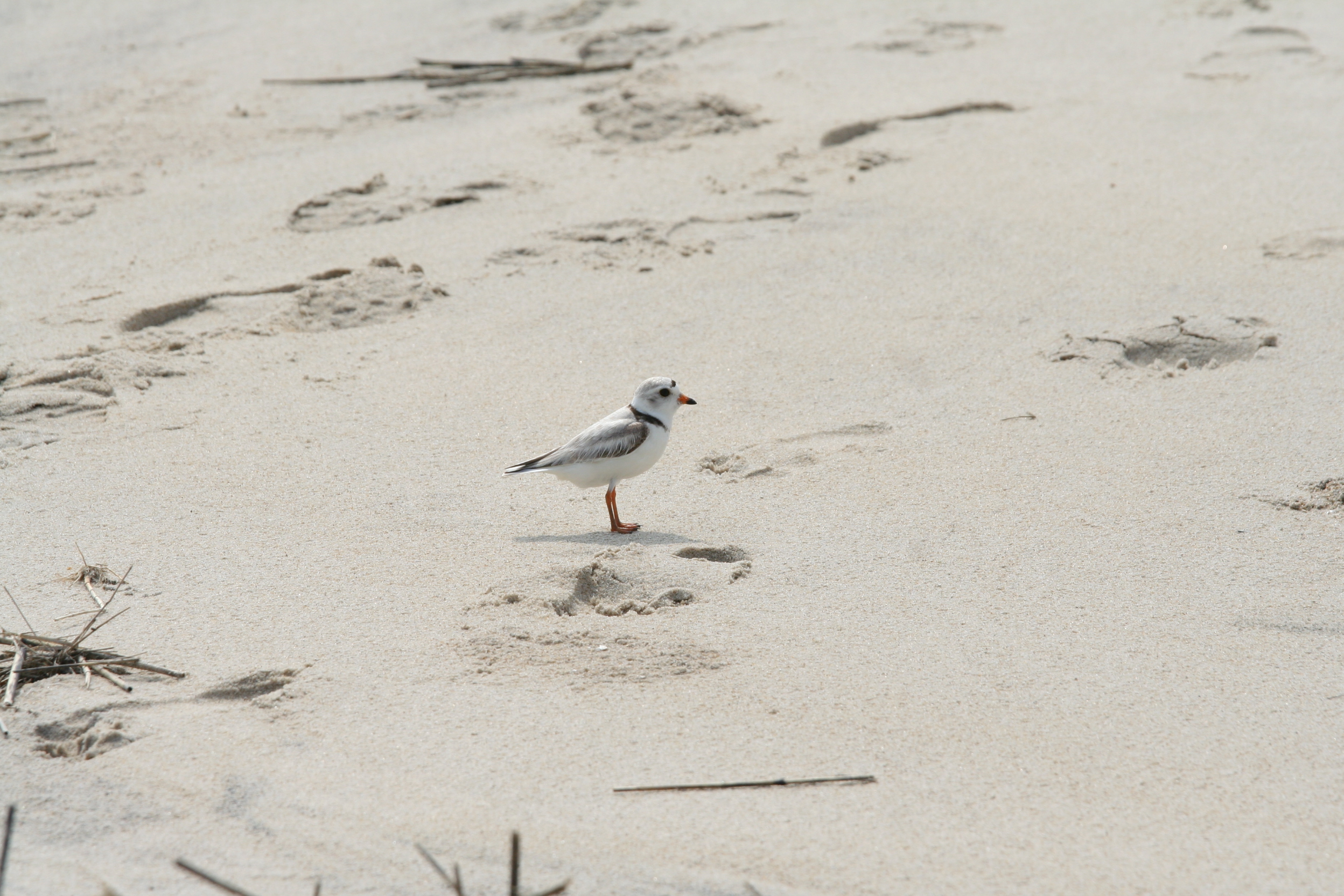Habitat prediction model created to protect piping plovers

Beach walkers along the East Coast often share the sand with several kinds of birds that scavenge the shore just out of the reach of waves. Among these shorebirds is the piping plover — a tiny, busy bird that nests in open areas along the beach.
Its neighborhood preference has resulted in this once common shorebird being on the federal threatened species list since 1986. A Virginia Tech doctoral student has created a model to help managers protect the birds against habitat damage and predation by red foxes.
Katherina D. Gieder of Montreal, Quebec, who will receive her doctorate in fish and wildlife conservation from the College of Natural Resources and Environment this summer, has combined dynamic models of sea-level rise, shoreline change, geomorphology features such as beach width, and piping plover nesting habitat suitability on Maryland's Assateague Island.
Gieder’s first goal, to develop and implement a tool to predict future change to piping plover habitat resulting from sea-level rise and beach management efforts, was a collaborative effort with the U.S. Geological Survey as part of a larger project to assess sea-level rise hazards.
Sea-level rise is hard to predict because rates vary by location, Gieder said. It is higher at the study site than at many other locations. Her research was unique in that it incorporated relative sea-level rise and the dynamic response of specific variables to that rise. Using her model, she simulated two rates of sea-level rise between 2050 and 2100, 3 and 4.1 millimeters per year. Both rates, less than an inch, are modest estimates.
“Moderate sea-level rise rates based on current levels may be a good thing for piping plovers in 50 to 100 years,” Gieder said. “Plovers like sparse habitat in which to rest, and sea-level rise may lead to more frequent over wash, which will prevent vegetation and increase suitable habitat by 40 to 80 percent.”
Some beach management strategies, such as beach nourishment and artificial dune modifications, also influence habitat availability, Gieder explained in her dissertation. Her model can predict how planned human modifications intended to address climate change-related threats will affect plover nesting habitat.
Her second goal was to address gaps in the understanding of predator population ecology, in particular red foxes and Atlantic coast piping plover breeding populations. For example, the study found that red fox occupancy increases sharply with increased eastern cottontail presence, but having more rabbits to eat didn’t always keep birds off the fox diet.
“Red foxes are territorial, so if one red fox has territory with few rabbits or small mammals, then it might turn to shorebird chicks and eggs. Also if a fox has young, shorebird chicks and eggs are an easy snack,” said Gieder, relating that one red fox in her study site caused almost 70 percent of all piping plover nests to fail because it learned to jump on top of exclosures that have been placed over nests, caving in the top so the fox could reach the eggs. “Maybe it did that because it had kits to feed.”
Gieder also determined that an intensive eradication program did not reduce fox occupancy or movement. “Red foxes in our study area generally moved little between camera stations spaced 300 meters (328 yards) from each other, but did move large distances at times, such as to occupy new territory available after lethal control efforts.”
“Our predictive model combined with predator findings will allow wildlife managers to better plan and implement effective management actions for piping plovers in response to the multiple stressors,” Gieder said. The U.S. Geological Survey is using an iPhone app built for the model that records data on nesting behavior.
In addition to the U.S. Geological Survey, the research was sponsored by the U.S. Fish and Wildlife Service and the North Atlantic Landscape Conservation Cooperative. The National Park Service provided data and logistics. The successful model development was published in the March 2014 issue of Ecological Modelling.
Gieder earned her bachelor’s degree at McGill University and her master’s degree at Trent University. At Virginia Tech she has been advised by Sarah Karpanty, associate professor and graduate program coordinator for the Department of Fish and Wildlife Conservation. Long before starting her graduate program, she worked as a technician with Professor Jim Fraser on a long-term study of piping plover on the Missouri River. Upon graduation, Gieder will work at the U.S. Geological Survey Pacific Island Ecosystems Research Center in Hawaii.




